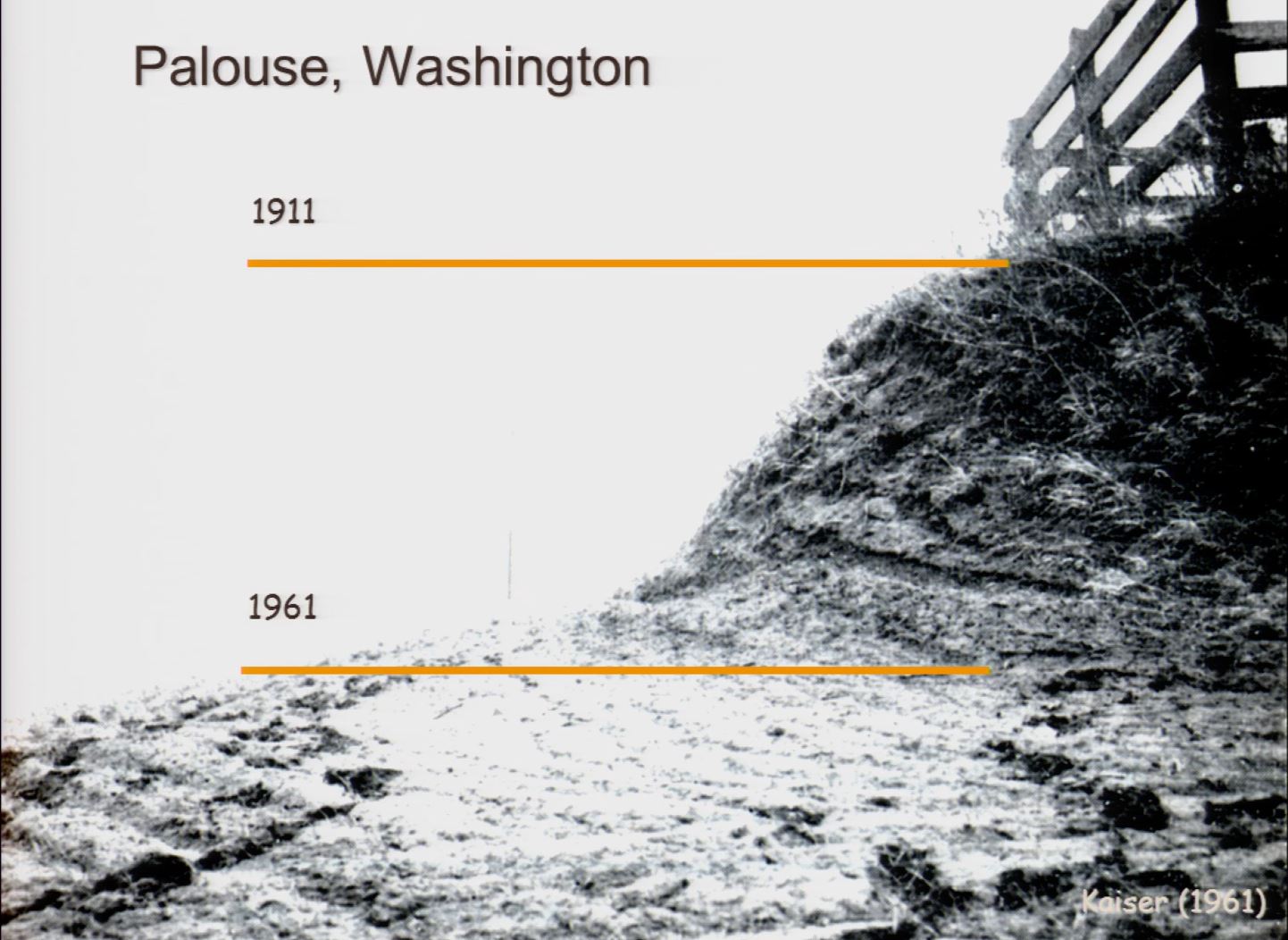I grew up on a small corn and soybean farm in Crawford County, IL. I enjoyed growing up on the farm and helping in the summers. I appreciated the lessons it taught me about making do with what you have and the valuable lessons you can only learn from manual labor. While I decided to leave the family farm for college, I was able to stay connected to agriculture through my education, majoring in Agricultural Engineering at the University of... Read More →
ILSOYADVISOR POST
Bringing Soil Back to Life
March 03, 2019
One-quarter to one-third of all arable land on Earth has been taken out of production due to soil degradation. Locations like Syria and Libya were once verdant pockets of food production, but thousands of years of agricultural use has eroded soil to the point of desertification.
“Soil degradation is not a new problem,” David Montgomery told attendees at the recent Conservation Cropping seminars. “It is happening everywhere.”
The Erosion of Civilizations
A geologist and professor of earth sciences at Washington State University, Montgomery has researched the role soil erosion and degradation played in the rise and fall of nations. In his book, Dirt: The Erosion of Civilizations, Montgomery correlates the cyclical population rises and decreases in history to a civilization’s ability—or inability—to feed itself.
He hypothesizes that the ebb and flow of ancient populations was actually due to deterioration of farmland. For example, the Ancient Greeks left the river valleys and cultivated land on higher slopes. Water and wind erosion played their part in eroding the plowed soil down the hillsides, leading to the civilization’s decline.
Eroding the New World
When settlers came to the New World, they brought the agricultural practices they learned from their ancestors. New technology like the steel plow further exacerbated soil degradation. Since the start of colonial agriculture, a little over 300 years ago, at least one-third of all top soil in America has been eroded. The photo below shows an extreme example of soil erosion caused by 50 years of wheat cultivation in Washington state.

This fence-line cliff shows five feet of erosion caused by 50 years of wheat cultivation. The fence marks the original soil level when the farmer began to till the land for production in 1911. The rate of erosion is around an inch per year.
We lose .3 percent of our global food production capacity each year to soil erosion and degradation. That might not sound like a lot but in 100 years that equates to 30 percent. Montgomery warned that this pace cannot continue if we are to provide for our current population, let alone a growing world.
Reversing Soil Erosion
The natural pace of geological erosion is .03 mm/year, which is essentially the same as the natural production of soil at .02 mm/year. However, in the photo above, we see that agricultural practices erode at a much faster rate than soil production. Based on over 400 peer-reviewed articles, Montgomery determined the average erosion of soil by conventional agricultural practices to be about 1.54 mm/year.
“The real challenge of agriculture in the next 100 years is to reverse soil degradation,” Montgomery said. “It can be done though. I’ve seen it done.”
Soil is a combination of mineral and organic matter. Because the mineral matter already exists, the only thing missing is organic matter. Through adoption of three principles of conservation agriculture, rapid improvement in soil health and even reversal of degradation can occur. Through his studies, Montgomery identified these principles:
- Don’t disturb the soil
- Maintain permanent ground cover
- Diversify crop rotations
Adopting practices aligned with these three principles can actually build soil much faster than nature can. In his own example, Montgomery used conservation techniques to build two inches of soil in five years in his backyard Seattle garden.
While building soil might not occur at that rapid pace across hundreds of acres of farmland, the three principles have been shown to work for farmers across the globe. Growers who have adopted these practices tend to see their profits increase as inputs decrease and yield holds the same or increases slightly.
If you want to hear more from Montgomery on bringing soil back to life, listen to this presentation from the 2017 National Conference on Cover Crops & Soil Health or follow him on social media @dig2grow.
The Conservation Cropping Seminars are hosted by the Illinois Department of Agriculture, NRCS and American Farmland Trust. The Illinois Soybean Association was a bronze sponsor of the seminars in 2019. Three events were held in Mendota, Springfield and O’Fallon. For more information on the seminars click here: http://www.ccswcd.com/ConservationCroppingSeminars/.





Comments
Add new comment